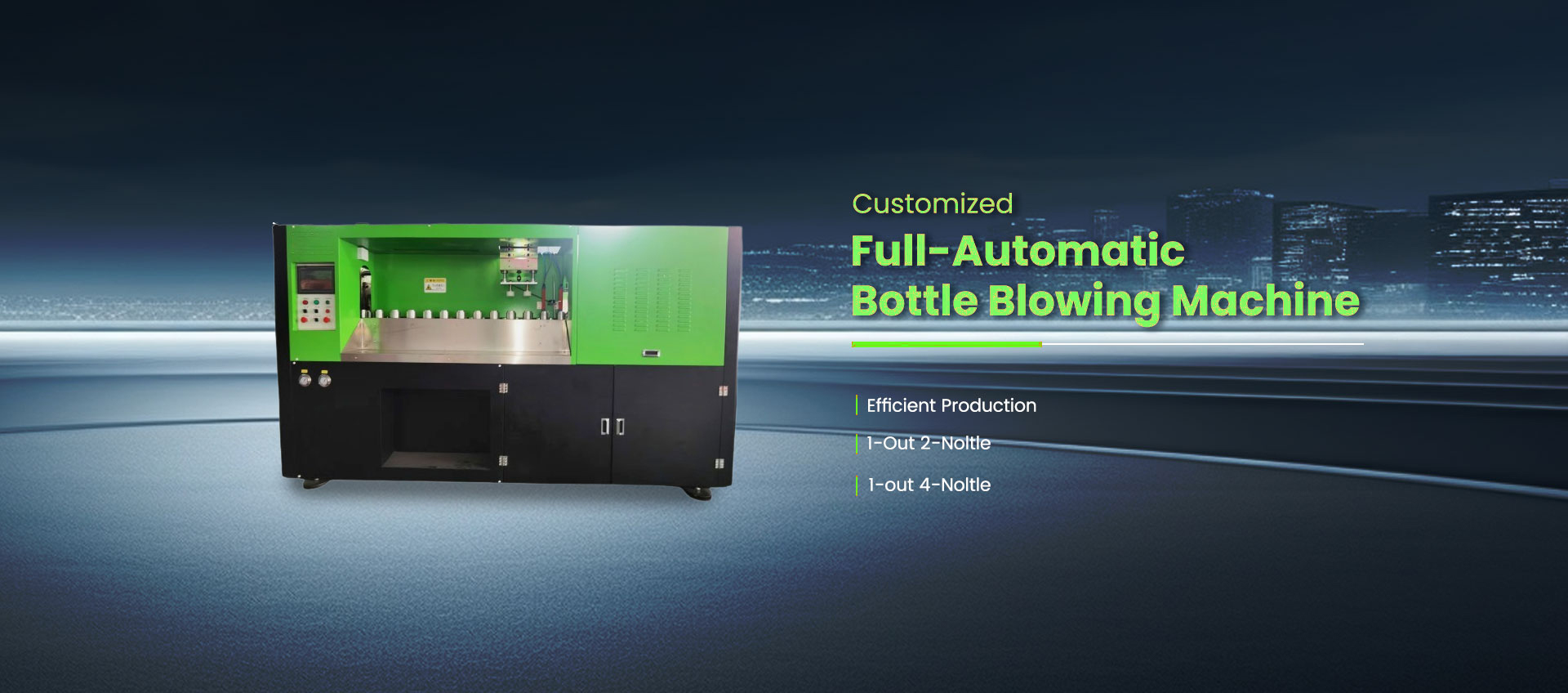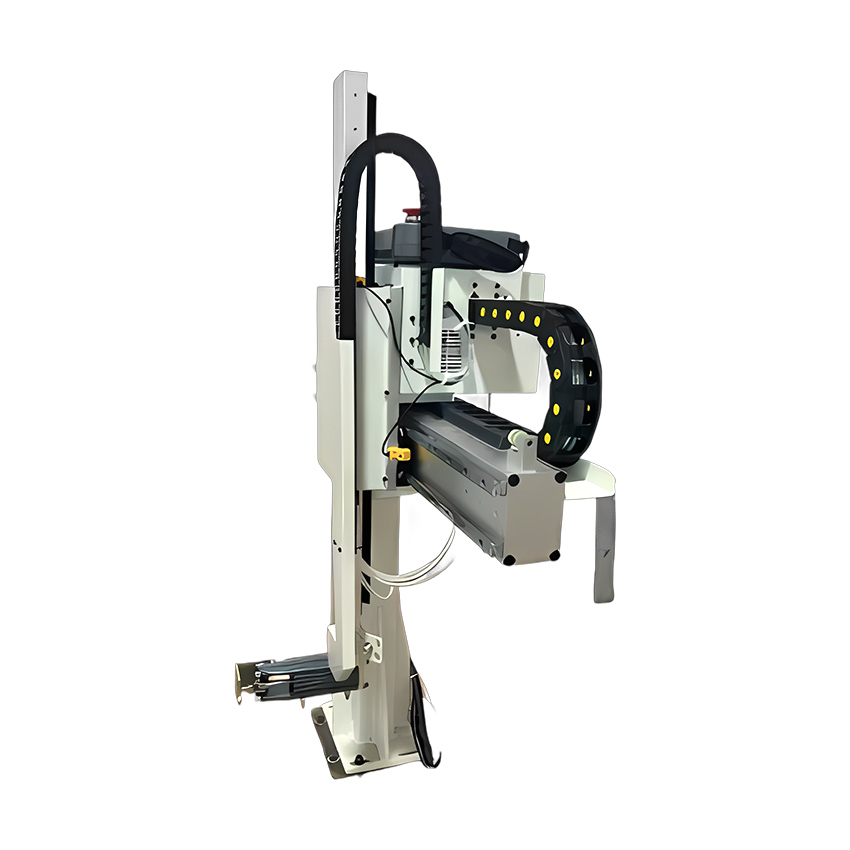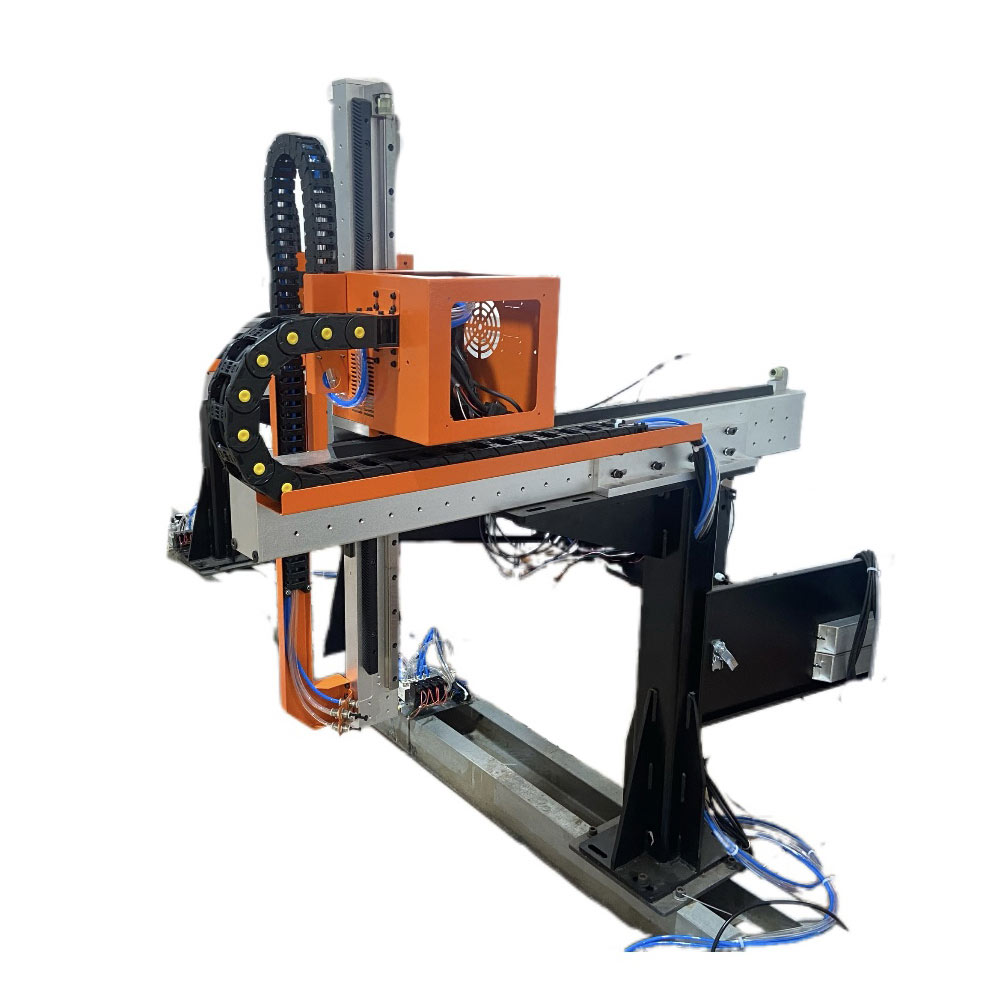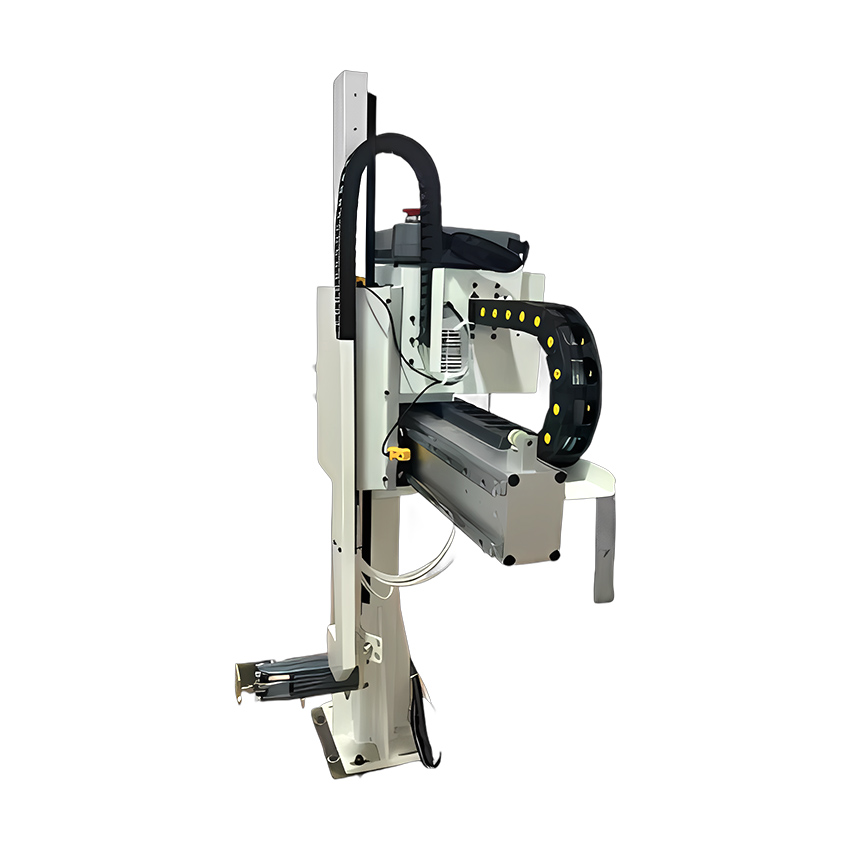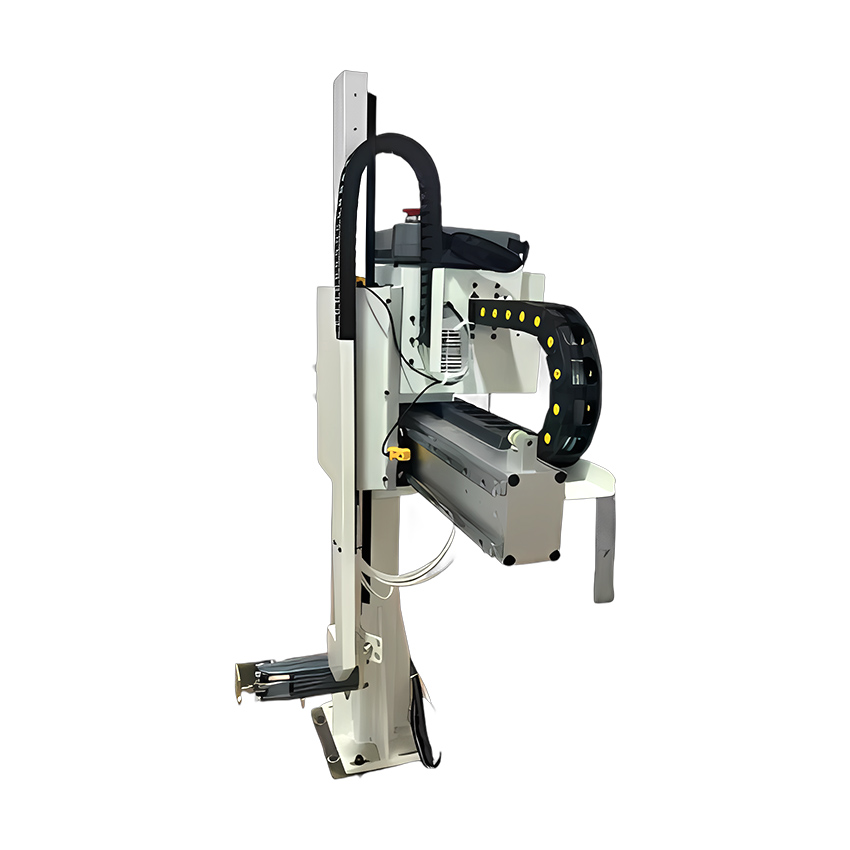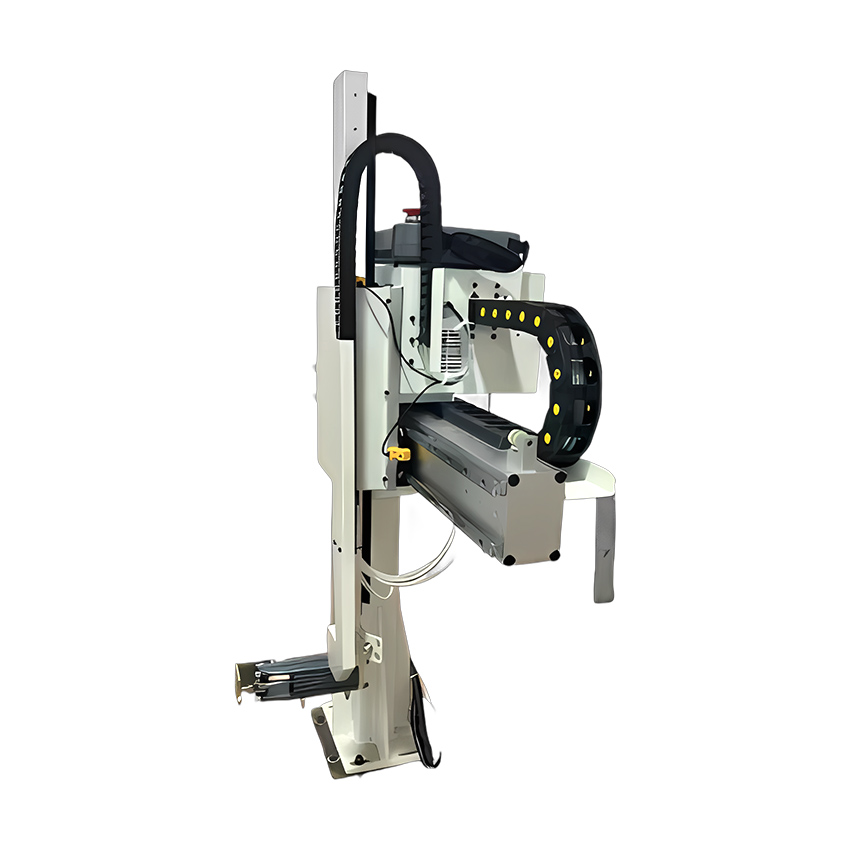
Industrial Robotic Arm for Blow Molding
- Product Information
The Industrial Robotic Arm is a type of automated equipment widely used in industrial production environments. Through programmable control, it can mimic the movements of a human arm and perform a variety of complex operational tasks. It typically consists of a mechanical structure, drive system, control system, and sensors, and features high precision, repeatability, and flexibility. In modern manufacturing, the Industrial Robotic Arm has become a crucial tool for improving production efficiency, ensuring product quality, and reducing labor costs.
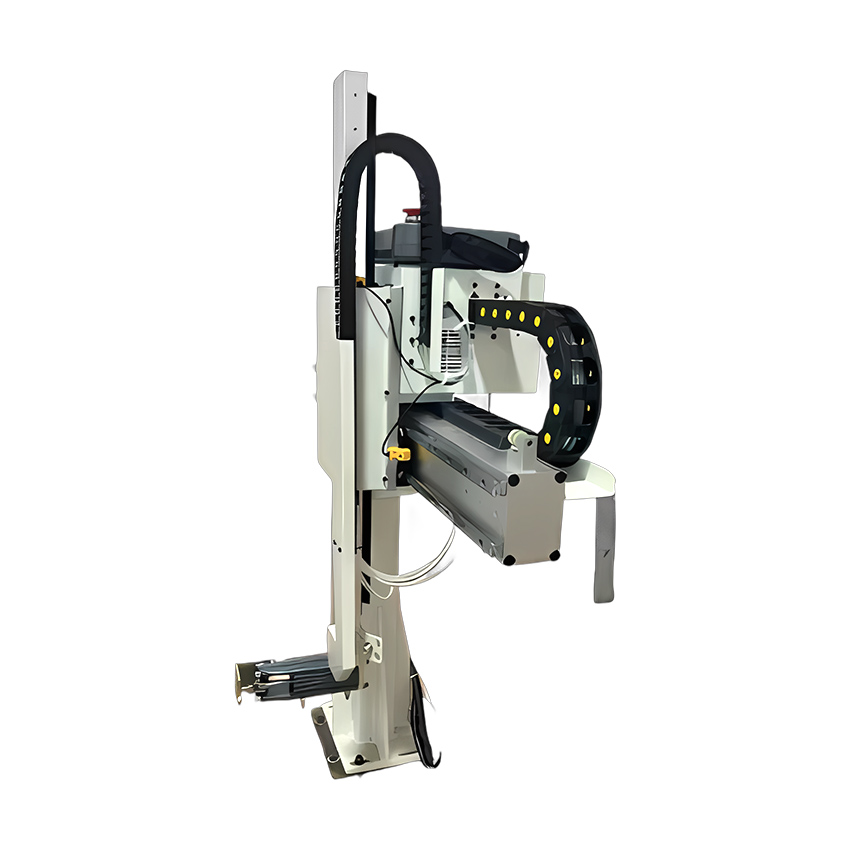
Industrial Robotic Arm Features:
1. High-Precision Positioning
This Industrial Robotic Arm utilizes an advanced servo motor drive system, combined with a high-precision reducer and encoder, to achieve a positioning accuracy of ±0.1mm. This level of accuracy far exceeds that achieved by traditional manual operations, ensuring precise positioning of materials during the blow Molding process, ensuring consistent product quality. For example, when producing high-precision plastic bottle preforms, the Industrial Robotic Arm can precisely place the preforms in the mold's center, avoiding product defects caused by misalignment.
2. High Load Capacity
Designed for use in blow molding machines, this Industrial Robotic Arm boasts a high load capacity. Capable of carrying up to 50 kg, the Industrial Robotic Arm easily handles blow-molded products of various sizes and shapes. Whether it's a large plastic container or a small preform, the Industrial Robotic Arm reliably grasps and handles them. For example, when producing large plastic barrels, the Industrial Robotic Arm can reliably remove them from the mold and place them on the conveyor, eliminating the risk of equipment failure or product damage due to excessive loads.
3. High-Speed Operation and Efficiency
The Industrial Robotic Arm's operating speed is a key factor in improving production efficiency. This product utilizes optimized motion control algorithms, enabling it to complete complex motion trajectories in a short period of time. Its maximum operating speed reaches 3 meters per second, several times faster than traditional manual operations. For example, in a standard blow-molding cycle, the Industrial Robotic Arm can complete the entire process from grasping the material to placing the finished product in less than 10 seconds, significantly shortening production cycles and improving equipment utilization and production efficiency.
4. High Stability
The stability of the Industrial Robotic Arm directly impacts the continuity of the production process and product quality. This product features a sturdy steel frame and advanced dynamic balancing technology, ensuring stability even under high-speed and heavy-load conditions. Its positioning repeatability is as high as ±0.05mm, ensuring consistent precision even during extended periods of continuous operation. For example, after hours of continuous production, the Industrial Robotic Arm can still perform every movement with pinpoint accuracy, without errors caused by vibration or fatigue.
5. Safety and Reliability
In industrial production environments, equipment safety is paramount. This Industrial Robotic Arm is equipped with a variety of safety features, including an emergency stop button, collision detection sensors, and a safety fence. Upon detecting an abnormality, the Industrial Robotic Arm immediately stops operation, ensuring the safety of both operators and equipment. Furthermore, the Industrial Robotic Arm's range of motion and speed are strictly limited, complying with international safety standards such as ISO 10218, providing comprehensive safety assurance for production sites.
6. Easy Programming
For user convenience, this product features a user-friendly programming interface. Operators can quickly configure the Industrial Robotic Arm's motion paths and parameters using simple graphical programming software. The software supports multiple programming languages and instruction sets, meeting the needs of diverse users. For example, even non-professional programmers can quickly master basic programming operations and complete the commissioning and operation of the Industrial Robotic Arm, significantly lowering the barrier to entry for equipment use.
7. Energy Saving and Environmental Protection
In today's focus on sustainable development, energy conservation and environmental protection are crucial considerations in equipment design. This Industrial Robotic Arm utilizes a highly efficient motor and drive system, minimizing energy consumption while maintaining performance. Its energy consumption is only 70% of that of traditional Industrial Robotic Arms, and its noise generation during operation is far below industry standards, providing users with a more environmentally friendly and quiet production environment.
8. Low Maintenance Cost
Equipment maintenance costs directly impact a company's long-term operating costs. This Industrial Robotic Arm features a modular design with independent components, facilitating easy maintenance and replacement. Key components such as the motor and reducer are made of high-quality materials and advanced manufacturing processes, ensuring a long service life and a low failure rate. For example, the Industrial Robotic Arm boasts a mean time between failures (MTBF) of over 10,000 hours. This means users don't need to frequently replace parts or perform repairs during extended use, reducing maintenance costs and downtime.
Industrial Robotic Arm Applications:
1. Blow Molding
On a blow molding line, the Industrial Robotic Arm precisely places plastic pellets or preforms into the blow mold and removes the finished product after molding. It seamlessly integrates with the blow molding machine's control system to enable automated production. For example, when producing plastic bottles, the Industrial Robotic Arm can complete a production cycle in less than 5 seconds, significantly improving production efficiency while eliminating the errors and safety hazards associated with manual operation.
2. Material Handling
The Industrial Robotic Arm can be used to handle a variety of blow molding raw materials and finished products. It quickly and accurately moves materials between different workstations according to pre-set procedures. For example, in the production of large plastic containers, the Industrial Robotic Arm can remove the molded containers from the mold and transport them to the packaging area for packaging, reducing the labor and time costs of manual handling.
3. Quality Inspection
During the quality inspection process, the Industrial Robotic Arm can automatically place products on the inspection equipment. It can place the products one by one in the inspection position according to a set program and remove them after inspection. For example, when inspecting the wall thickness and appearance of plastic bottles, the Industrial Robotic Arm can quickly place the bottles on the inspection equipment, ensuring that each bottle is accurately inspected, improving the efficiency and accuracy of quality inspection.
4. Packaging
The Industrial Robotic Arm can be used in the product packaging process. It can neatly place blow-molded products into boxes or pallets and stack them. For example, in the packaging process of plastic bottles, the Industrial Robotic Arm can neatly place the bottles into the box according to a preset arrangement, then seal and stack them, significantly improving packaging efficiency and reducing the error rate associated with manual operation.
5. Cleaning and Maintenance
The Industrial Robotic Arm also plays a vital role in equipment cleaning and maintenance. It can be used to clean blow molding molds and equipment surfaces, ensuring equipment cleanliness and a hygienic production environment. For example, when producing food-grade plastic containers, the Industrial Robotic Arm can regularly clean the molds to prevent product quality issues caused by mold contamination while reducing the time and labor required for manual cleaning.
6. Special Process Handling
For specialized blow molding processes, such as multi-layer co-extrusion blow molding or blow molded products with complex decorations, the Industrial Robotic Arm can assist with complex operations. For example, when producing labeled plastic bottles, the Industrial Robotic Arm can accurately apply the label to the designated location after the bottle is formed, ensuring the product's appearance quality.




